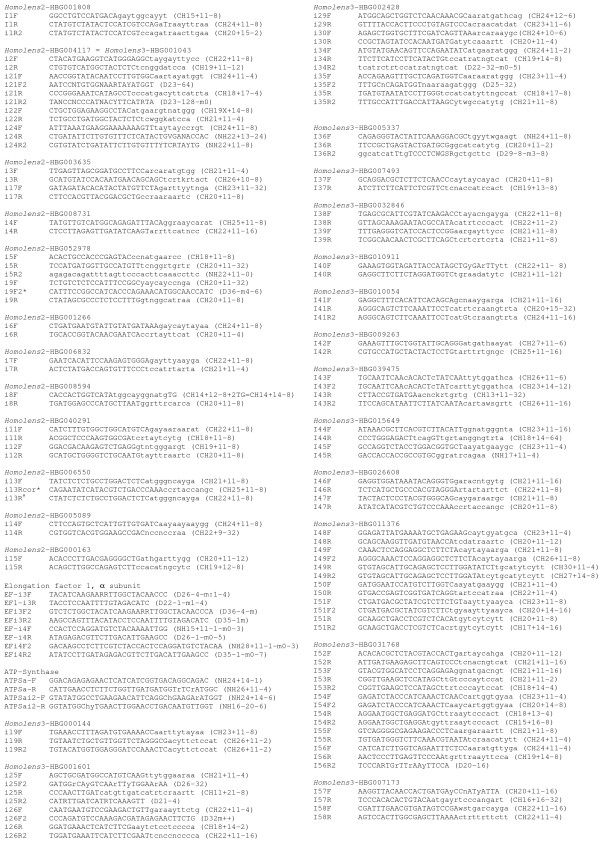Figure 1.
Primer sequences. Sequences are written using the IUPAC code. We used the following codes to describe the rules that underpinned primer design: Capital letters represent the 5'clamp (non-degenerate), whereas small letters represent the degenerate part supposed to contain no mismatch whatever the species (based on known sequences, protein for CH primers or nucleotide for D or NH primers). CHX+Y-z: CodeHop primer with a 5'clamp (non-degenerate part) of X bases, and a 3' z-fold degenerate end of Y bases. CHX + Y-z + 2GT: CodeHop primer designed at the intron limit, which contains the first two bases of the intron (by mistake, we reversed the two bases in the single such case, i8F). DX-Y-mz-t: Classical degenerate primer of X bases long, Y-fold degenerate, containing z to t mismatches according to the species (despite degeneracy in primer design). NHX+Y-Z: We called this a 'Nucleotide-hop' primer, by homology with CodeHop primers, but design was based on nucleotide alignment; we designed a 5' clamp (non-degenerate) and degenerate the 3' end according to the set of nucleotide sequences available thus ignoring codons. NHX+Y-Z-mz-t: Same as above, but, despite primer degeneracy, there may remain mismatches in some species; in this case there are from z to t mismatches according to the species for which we have sequence data. For instance, a primer (D30-1-m0-2) actually does not contain ambiguity bases (-1: not degenerate), and contains 0 to 2 mismatches according to the species. Other symbols: * this primer was not used. # erroneous primer sequence, the subsequently corrected primer i13Rcor was not tried

